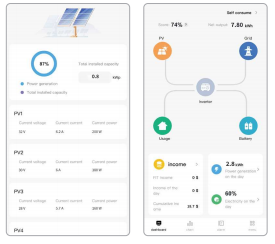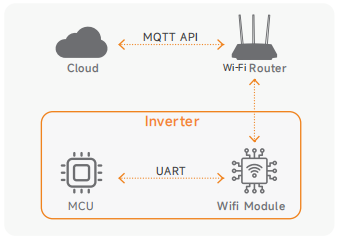In today’s smart home era, even home energy storage devices are getting “connected.” Let’s break down how a home energy storage manufacturer boosted their products with IoT (Internet of Things) capabilities to stand out in the market and meet the needs of both everyday users and industry professionals.
The Client’s Goal: Making Energy Storage Devices “Smart”
This client specializes in making small home energy storage gear—think devices that store electricity for your home, like AC/DC energy storage units, portable power stations, and UPS (uninterruptible power supplies that keep your devices running during blackouts).
But here’s the thing: They wanted their products to be different from competitors. More importantly, they wanted their devices to work seamlessly with home energy management systems (the “brain” that controls all your home’s energy use, like adjusting when your solar panels charge the storage or when your fridge uses stored power).
So, their big plan? Add wireless connectivity to all their products and turn them into two types of smart versions.
Two Smart Versions: For Consumers and Pros
1. Retail Version (For Everyday Users)
This is for people buying the devices for their homes. Imagine you own a portable power station or a home battery—with the Retail Version, it connects to a cloud server.
What does that mean for you? You get a phone app that lets you:
- Set it up (like choosing when to charge the battery, maybe during off-peak hours to save money).
- Control it live (turn it on/off from work if you forgot).
- Check real-time data (how much power is left, how fast it’s charging).
- Look at history (how much energy you used last week).
No more walking to the device to press buttons—everything’s in your pocket.
2. Project Version (For Professionals)
This one is for system integrators—people who build or manage big home energy systems (like companies that set up solar panels + storage + smart thermostats for homes).
The Project Version gives these pros flexibility: The devices have wireless features, but instead of being locked into one app, integrators can:
- Build their own backend servers or apps.
- Plug the devices directly into existing home energy management systems (so the storage works with the home’s overall energy plan).
How They Made It Happen: Two IoT Solutions
1. Tuya Solution (For Retail Version)
They teamed up with a tech company called OWON, which used Tuya’s Wi-Fi module (a small “chip” that adds Wi-Fi) and connected it to the storage devices via a UART port (a simple data port, like a “USB for machines”).
This link lets the devices talk to Tuya’s cloud server (so data goes both ways: device sends updates, server sends commands). OWON even made a ready-to-use app—so regular users can do everything remotely, no extra work needed.
2. MQTT API Solution (For Project Version)
For the pro version, OWON used their own Wi-Fi module (still connected via UART) and added an MQTT API. Think of an API as a “universal remote”—it lets different systems talk to each other.
With this API, integrators can skip the middleman: Their own servers connect directly to the storage devices. They can build custom apps, tweak the software, or slot the devices into their existing home energy management setups—no limits on how they use the tech.
Why This Matters for Smart Homes
By adding IoT features, this manufacturer’s products aren’t just “boxes that store electricity” anymore. They’re part of a connected home:
- For users: Convenience, control, and better energy savings (like using stored power when electricity is expensive).
- For pros: Flexibility to build custom energy systems that fit their clients’ needs.
In short, it’s all about making energy storage devices smarter, more useful, and ready for the future of home tech.
Post time: Aug-20-2025


